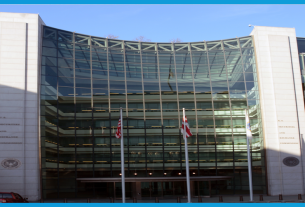In this blog post, Michał Walesiak shares how increased bird diversity in an area of unmanaged windthrow persisted over a 20-year span in Poland.
Natural disturbances in forests, such as hurricanes, fires, bark beetle outbreaks, often evoke negative emotions in people. Many find it hard to believe that hurricanes, fires, bark beetles… may actually bring some benefits to nature, such as increase in biodiversity! This increase is primarily associated with the “chaos” and “untidiness” of disturbed forests, characterized by damaged trees, snags, fallen logs, and pieces of dead wood. Many specialized species, including insects, fungi, and birds such as woodpeckers, thrive in these areas, which are rare in managed European forests.
But the “chaos” of disturbed forests often lies in conflict with wood production. Therefore, forest managers usually remove the disturbance legacies such as remaining dead and damaged trees, and plant new trees in their place. Although many people view this in a clearly positive perspective, it actually impairs the forest biodiversity. Well, at least that’s what happens during the first few years, when all the cleaned up area is completely open and new trees have yet to regrow. But does this effect persist once the damaged areas start to resemble a forest again? This is exactly what we aimed to investigate!

We tracked birds for 20 years after a large hurricane in a pine forest in Poland. We counted birds in unmanaged windthrow areas (where there was no forest management), managed windthrow areas (where the area was cleaned up, the soil prepared, and new trees planted), and control forests (virtually unaffected by the hurricane). We wanted to see if the initial high bird diversity in unmanaged windthrow areas persisted over 20 years.
It turned out it did! Birds were more diverse on unmanaged windthrow compared to managed windthrow for the whole twenty years. Several forest birds preferred the unmanaged windthrow, including such key species as woodpeckers, who maintain the diversity of other birds and bats. We also observed a few species that preferred the cleaned-up, managed windthrow, but they were open-habitat birds such as Hooded crow or Eurasian skylark.

Furthermore, unaffected forests were inferior to unmanaged windthrow areas in terms of bird diversity. Not only was species richness lower throughout the study, but even forest birds had higher abundance in unmanaged windthrow areas towards the end of the study. The forest structure of managed forests is often simplified, consisting of single tree species of uniform height and lacking important microhabitats related to dead and damaged trees. This is why even a young forest created after a disturbance may actually host higher bird diversity than its much older counterpart.

At this point, we hope that our results have convinced you of the importance of improving the poor reputation of disturbed forests. We should more often view natural disturbances as low-cost ecosystem restoration tools rather than solely as catastrophes. In forests where biodiversity protection remains a priority, we advise leaving as much of the area unmanaged after disturbance as possible. In the future, we hope to see more protected areas established in disturbed regions, such as the Protective Forest “Szast” in Poland or Hälleskogsbrännan reserve in Sweden.
Although forest disturbances can be catastrophic in many aspects, they can also be highly beneficial for biodiversity over decades, provided they are left unmanaged.
Read the full article, “Salvage logging and subsequent post-windthrow management diminish forest bird communities for two decades” in Journal of Applied Ecology.


